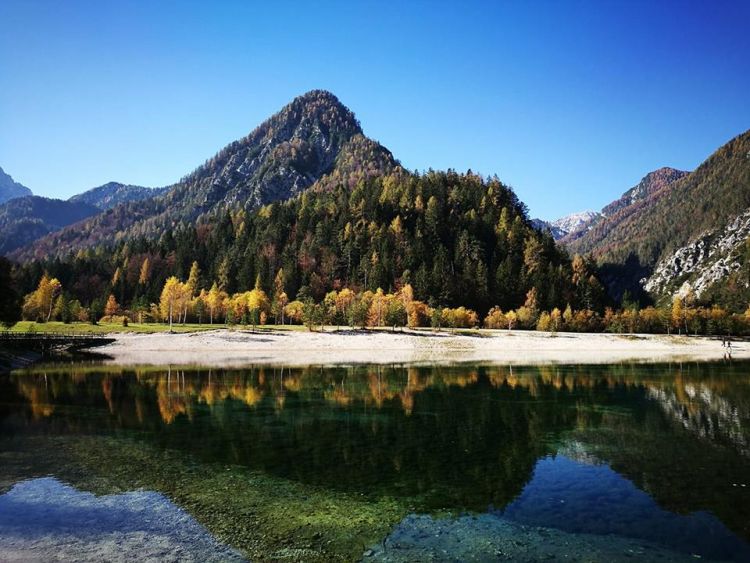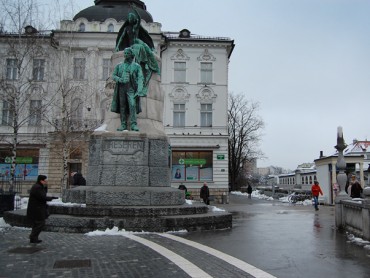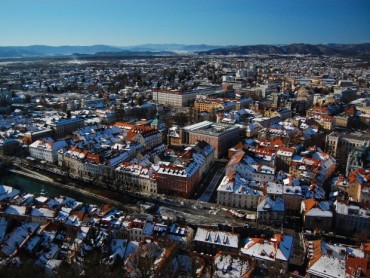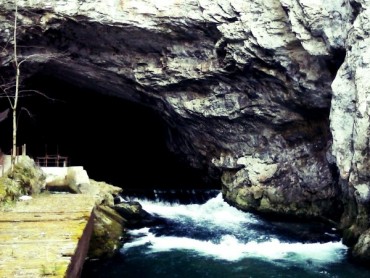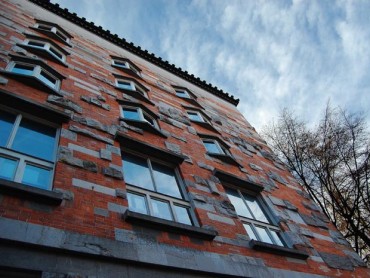Lake Jasna is a special place in the middle of the Julian Alps, where we can take a break from the city life and our everyday worries, and enjoy the crystal clear water.
It lies within walking distance from Kranjska gora, best known for its ski slopes under the Vitranc peak, which makes it a popular destination in the winter time, however, the lake as well as its surrounding nature is becoming increasingly popular among Slovene and foreign tourists in the summer time as well. Lush forests and the cool lake water offer a refreshing break from the hot summer temperatures to those looking for leisure and relaxation, while more active visitors can enjoy numerous activities such as cycling (in the nearby bike park or on bike paths around Kranjska gora), hiking, summer tubing and toboggan, and even roller skating. No matter your lifestyle, age, size or preference, Kranjska gora has all of your needs covered.
Nature enthusiasts can look forward to seeing the nearby Martuljek forest under the Špik mountain, where everyone can enjoy the two Martuljek wateerfalls. And while the Lower Martuljek waterfall is accessible to everyone through a natural gorge, the Upper Martuljek can only be accessed by experienced hikers due to a short climbing section. After the short hike, the alpine farm “Pri Ingotu” offers great Slovenian homemade cuisine anyone can appreciate. Another popular destination near Kranjska gora and Lake Jasna is the Zelenci natural reserve, with the Zelenci lake, created by the Sava Dolinka River, as the main attraction. As Sir Humphry Davis once wrote about the Sava valey and its lakes and waterfalls, “There is nothing more beautiful in Europe than this”. And he was right. Lake Zelenci is one of the hidden gems of Slovenian nature. It is home to different species floa and fauna, including the carnivourous sundew, various amphibians and nesting birds among others. It I situated at the northern edge of the Triglav national park, surrounded by Vitranc and the Karavanke mountain chain. Its emerald green colour derives from the pure streams emerging from the layers of marl ad is the reason for the lake’s name – Zelenci (green). The natural reserve is able to maintain its untouched nature with the help of bridges set out all around the lake and the marsh, enabling visitors to thoroughly experience all the reserve has to offer without disrupting the local flora and fauna.
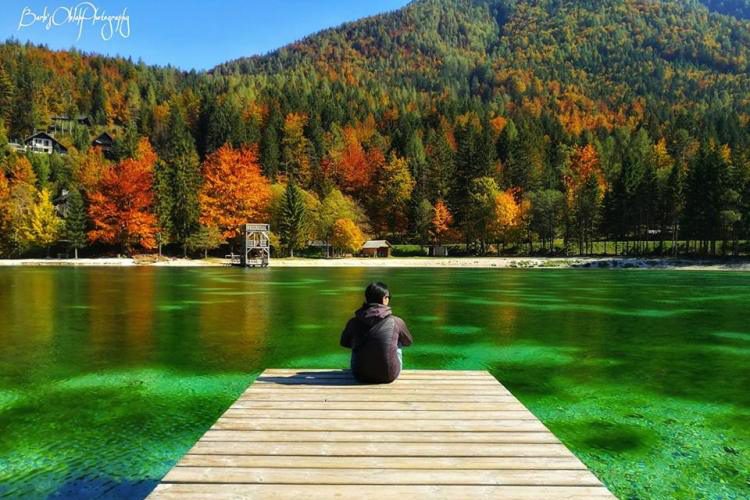
Avtorji fotografij: Stane Žerak, Dominika Razinger, Sandi Kelc, Denis Sodržnik, Kristina Razpet, Barbara Oblak, Aljaž Čibej, Blaž Poljanšek, Bojan Slevec, Miro Zalokar, Polona Škegro
However, Lake Jasna remains one of the most popular and well-known tourist destinations around Kranjska gora. If you are already staying at Kranjska gora, you can follow the road to Vršič and reach Lake Jasna in a little over a mile. The locals highly recommend visiting it on foot to minimize the amount of traffic as well as thoroughly enjoy all that Kranjska gora has to offer. If this is not an option, Lake Jasna offers free parking spaces right next to the lake. Another way to reach it is a scenic tourist bus route that can also take you right to the Peričnik Waterfall and even Planica, the famous ski jumping hill where ski jumpers from all around the world gather every winter to compete for the world Planica ski jumping cup. The day ticket prices for adults are 12 €, while children under 12 years ride for free, which makes it a comfortable and affordable way to visit several beautiful sights in a single day.
Lake Jasna was formed by two interconnected artificial lakes at the confluence of the Mala and Velika Pišnica streams. Its shape has constantly changed throughout history and in the 1930’s it witnessed the constructions of an outdoor pool with heated water and a smaller restaurant thus expanding its tourist offer. The pool was soon taken down; however, a second lake was added in the nearby gravel pit.
Despite its remarkable beauty and tourist potential, the area was long ignored and forgotten; however, locals have begun to realize the opportunities Lake Jasna brings for the local tourist industry and keep expanding the offer each year to accommodate more tourists and enable a wonderful experience. The lake banks and hiking trails are cleaned and well-marked, a jumping tower was built for the daring swimmers, and benches and wooden peers have been added all around the lake. Now, anyone can find a peaceful spot around the lake and enjoy the scenery. A small wooden library near the banks also caters to avid readers. There, they can borrow a book completely free of charge and, upon reading it, return it for someone else to enjoy. Sporting enthusiasts also appreciate Lake Jasna for its diverse offer of activities, such as SUP (stand up paddling), kayak and others.
Photographers are also starting to discover Lake Jasna and its emerald water reflecting the mountains above it. Its vivid colours and pristine nature combined with a relative anonymity of the locations makes it a perfect subject for original landscape photography. The locals are beginning to recognize the photographic potential of Lake Jasna and have even put up a photo frame with a wooden bench and a statue of Vitranc where tourists can take a memory photo of themselves and help promote Lake Jasna and its beautiful scenery on social media. Another great photo spot is the bronze ibex statue at the edge of the lake, a favourite by far, among children, who often climb on top of it. The statue is considered as the symbol for Lake Jasna, ever since the sculptor by the name of Stojan Batič created it to celebrate the beauty of nature.
The lake is towered by the Prisank or Prisojnik and the Razor mountains. Prisank, as the locals name it, is an extended mountain with no less than two popular tourist destinations. The Prisank window (Prisankovo okno) directly under the mountain peak is one of the largest natural openings in the Slovenian territory and can be seen perfectly from Lake Jasna, while the northern wall of the Prisank Mountain is linked to a folk legend of the buckwheat girl (Ajdovska deklica). The buckwheat girl was a kind girl living on the cliffs of Prisank and guiding travellers lost in snowstorms to safety through the Vršič mountain pass and the travellers would show their gratitude by leaving her food and water. She was also a nymph, prophesising the destiny to newborn babies. As the legend tells it, one day, she was visiting a newborn, whom she foretold that he was to become a hunter to shoot the Goldenhorn (the ibex protector of the Alps) and use his horns to find endless wealth. Upon hearing this prophecy, the nymphs were so infuriated with her that they turned her to stone with her face now forever etched into the wall of the Prisank Mountain.
The Kneipp path is also a popular location, particularly among hikers coming back from a hike. It is a two-part circular path made of smaller and larger stones with one of the parts overlapping a small stream. Tired hikers often use it to alleviate discomfort and pain in their feet by walking barefoot on the stones in the refreshing water. Even during winter, when the water is close to freezing, the hikers still soak their tired feet in the running water, as they say it has become a tradition and cannot imagine a hike without it.
